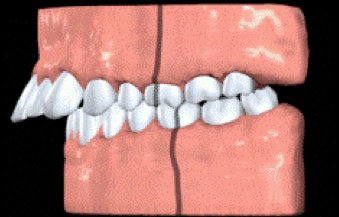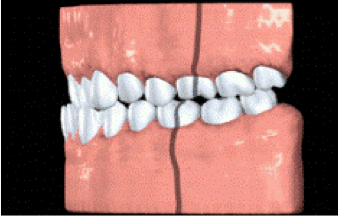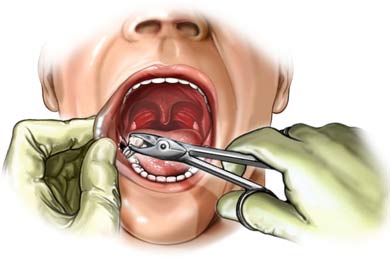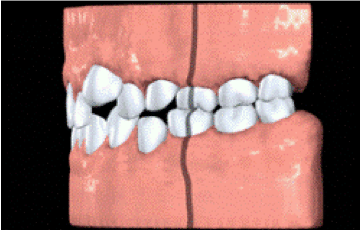In this article, we state in order of which teeth should be chosen for orthodontic extraction , the reasons for that choice and advantages.
Candidates of Orthodontic Extractions
Premolars
“Premolar extraction” provides about 8 mm of space per quadrant and is the accepted way to provide space in order to relieve crowding, retract incisors that are too protruded and to move the molars mesially.[divider scroll_text=””]
First Premolar
Advantages
- The most commonly extracted tooth, because of its Central position in each quadrant, thus it is always near the site of crowding.
- It can be replaced by the 2nd premolar (same shape, same contact area with canine), thus teeth contact quality isn’t affected.
Indications

- 4 X 1st premolars, in case of bi-maxillary protrusion and marked crowding.
- 2 X 1st upper premolars, in case of class II division 1 with considerable overjet.
- 2 X 1st lower premolars, in case of sever crowding in the lower and Arch discrepancy isn’t marked in class II.[divider scroll_text=””]
Second Premolar
Indications
- Arch discrepancies is mild “ length 7.5 mm or less (7.5mm = premolar unit)” and no indication for incisor retraction.
- If mesial movement of the molar is required.
- To create space for the 2nd permanent molar.
- Open bite closure in class I.
- When maxillary retraction is less needed.
- Tooth condition isn’t favorable (badly decayed, beyond the limit of orthodontic tooth movement or its movement will take too long).
- When the facial contour are in good balance and proportion.[divider scroll_text=””]
First Permanent Molar
Facts
- The 1st Permanent Molar is considered the as the untouchable tooth since the beginning of orthodontics history, why? It’s the corner stone of dentition, maintain the height of bite, always in a right position in the arch and essential tooth in treatment.
Indications
- When extraction of the 4X premolars and even with the extraction of 4X 3rd molars doesn’t relief the crowding and correction of the basal arch discrepancies. If necessary to extract, then two principles should be considered to when to extract:
- Extraction after the 2nd molar erupts, if space is needed for the anterior
- Extraction before the 2nd molar erupts, if no space is needed for the anterior.
- Before extraction, the dentist must be sure by X-ray film that the 3rd molar is in normal size and good position.[divider scroll_text=””]
Second Molar
Indications
- When the 3rd molar is present, normal size and position.
- In open bite to temporary reduce the molar functional area.
- Sometimes removed when the 1st molar moved mesial leaving insufficient space for the premolars, Extraction of the of 2nd molar will help distalize the 1st molar and increase space for the 1st premolar.
- Extraction of the 2nd molar doesn’t always relief crowding spontaneously but may relieve molar impaction if:
- The 3rd molar is severely inclined mesially.
- The 3rd molar development didn’t proceed beyond calcification of the crown at the time of extraction.[divider scroll_text=””]
Third Molar
3rd molar extraction is still a controversy of its role to relief or prevents late incisors crowding.[divider scroll_text=””]
Upper Central Incisors
Only when it’s beyond restoration.[divider scroll_text=””]
Upper Lateral Incisors
Only when severely malformed or severely malposed (the apex is positioned palataly).[divider scroll_text=””]
Lower Incisors
Indications
- Anomalies in the number of teeth.

Moderate Class III malocclusion - Anomalies in the size of the teeth.
- Ectopic eruption (developmental disturbance in the eruption pattern of the permanent dentition) of incisors.
- Moderate Class III malocclusion.
- Severe periodontal + gingival involvement. (disappearance of external alveolar lamina and loss of gingival tissue)
Clinical implications
- Contraindicated when there is accentuated overjet.
- The canines will displace mesially.
- Final occlusion should be evaluated.
Advantages
- By extracting a severely malposed incisore it Prevents the relapse, limits the unnecessary movement of many teeth, correction becomes easier and specific to one dentition area.[divider scroll_text=””]
Canine
Only extracted when beyond repair, severely malposed, impacted or beyond the scope of orthodontics. The apex position is prime consideration.[divider scroll_text=””]
Sources
- Orthodontic Cyber Journal, Orthodontic Extraction – When, Where, What? by Dr. Amit Prakash.
- Written Article by Dr. Mohsen S. Ozaibi for Misr International University, 2009.
OziDent Members Only
The rest of article is viewable only to site members,Please Register and/ or Confirm registration via EmailHere.If you are an existing user, please login.

